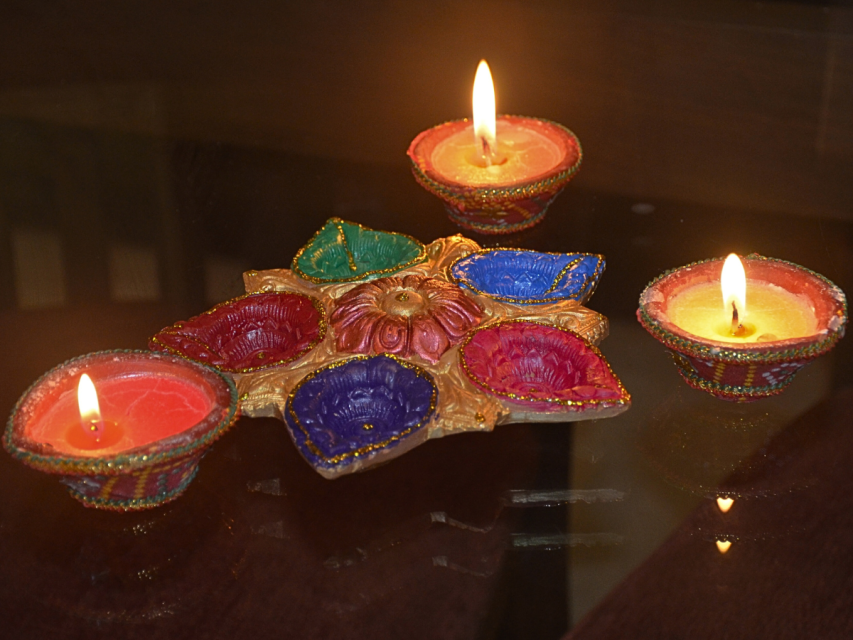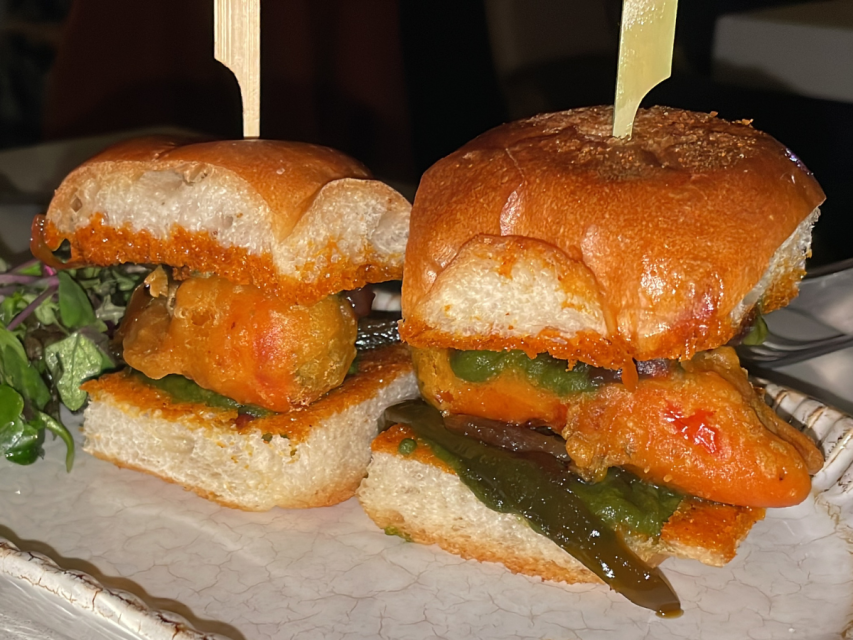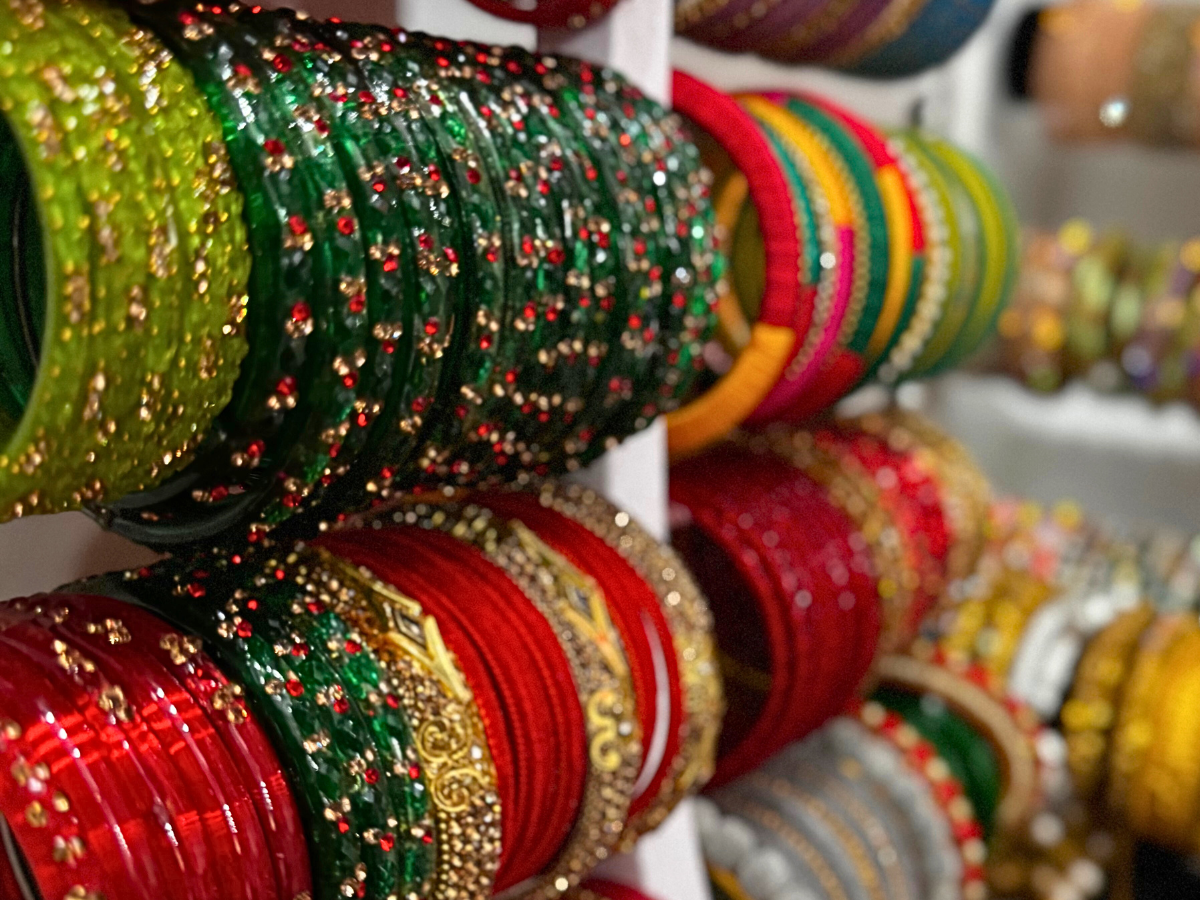
Sign up below to get Mission Local’s free newsletter, a daily digest of news you won’t find elsewhere.
Hari Bhatt, 28, mans the cash register of New India Bazaar on Polk Street in San Francisco, a store that has been in his family for 30 years. The family of regulars across the counter is trying to decide between buying a bag of low glycemic-index Basmati rice for the diabetic dad and rasmalai, a Bengali dessert, for the kids. They can’t afford both with the recent price increase on Indian imports.
Take the rice and you can still make kheer for the kids, Bhatt tells them. Kheer is another festive Indian sweet dish made from rice, milk and jaggery. The family agrees.
In late August, President Donald Trump added a 25 percent penalty on imports from India as punishment for the country’s purchase of Russian oil. This was on top of an existing 25 percent tariff that he had already imposed on goods from many South Asian nations, including India.

Want the latest on the Mission and San Francisco? Sign up for our free daily newsletter below.
As a result, the once stable prices of staple Indian exports like Basmati rice, paneer, spices, teas, sauces and traditional snacks have jumped significantly, forcing stores like New India Bazaar to decide whether to absorb the costs or raise prices.
“It’s always tough when somebody has to put something back on the shelf. But they also see the effort we have been making to meet them in the middle,” said Bhatt.
The price of a small pack of Parle-G, a favorite Indian biscuit usually enjoyed with a hot cup of chai, has been 35 cents at New India Bazaar for as long as Bhatt can remember. Now that same packet is 50 cents — a 43 percent jump. With Indian imports making up 90 percent of its inventory, this could be the story across the store’s products.
The family is trying their best to avoid such hikes. They back-stocked as many nonperishables as they could including traditional Indian pots, pans and ladles. But that was harder to do with seasonal or festival-specific items — and Diwali, celebrated on the third day of the festival of lights, is on Monday.
It celebrates prosperity and the perpetual win of good over evil. As one of the biggest Indian festivals, which lasts five days, it is also the best season for business. The most popular items during Diwali are clay lamps, called diyas, that are traditionally lit with oil or clarified butter using a cloth wick. This year, their prices jumped 12 to 20 percent, depending on the retailer.
 Traditional decorated diyas lit at home during Diwali celebrations. Photo by Anusha Subramanian.
Traditional decorated diyas lit at home during Diwali celebrations. Photo by Anusha Subramanian.
With most items, the Bhatts split the tariff between the store and the customer to keep goods as affordable as possible. The exact amount of cost absorbed is decided by the family on a case-by-case basis.
“This is what we do at the dinner table,” said Bhatt.
Despite the jumps, Bhatt wasn’t worried about seasonal sales during Diwali being impacted.
“I think people will be a bit more aware of prices. But we Indians are joyful people. We celebrate so much and so often,” he said. During festival season, customers want to connect with their culture even more than usual and they might spend less but they will continue to buy enough, he said.
That sentiment was echoed by many other Indian storeowners across the city.
Sajad Shiek and Avik Chattopadhyay, at Indian Spices and Groceries in the Mission, buy the bulk of their inventory locally. Popular goods, like achaar (pickles) from brands like Deep Foods have U.S. manufacturing plants and their prices have remained stable.
In 2024, the price of decorated diyas at this store was $4.99 for a pack of four. Today it is $5.99, a 20 percent price hike. And this is after their wholesale distributor had already absorbed a portion of the tariffs.
They agree that customers will continue to buy, but “they might buy less stuff,” said Shiek.
A beloved Diwali tradition is to wear new clothes, usually traditional ones like saris or kurtas. Originally from Nepal, Manisha Gurung owns Manisha Fashion Collection near Chinatown. It remains one of the few places in the city that sells traditional Indian attire.
Her family owns a clothing boutique in Nepal and most of her pre-stitched items are sewn there and then imported to the United States. However, during festival season, she imports around 15 to 18 boxes of clothes directly from India. While shipping used to be free, this year she had to pay an extra $50 per box, forcing her to increase her prices by 5 percent.
“When I tell customers it’s because of tariffs, they understand. And they buy anyway because where else will they get traditional Indian clothes in the city?” she said.
Sonu Bhamu, owner of Jalebi Street in the Upper Haight, which serves Indian street food, plans to absorb increased costs until trade talks between India and the United States reach a conclusion.
The United States is India’s largest foreign market and with Indian goods exports plunging 20 percent in September, it’s not the prices he is worried about, but the availability of some favorite Indian ingredients.
 Vada Pav, an Indian street food, served at Copra in San Francisco. Photo by Anusha Subramanian.
Vada Pav, an Indian street food, served at Copra in San Francisco. Photo by Anusha Subramanian.
Chef Pujan Sarkar of TIYA, a Michelin guide restaurant that serves contemporary Indian classics reimagined with Californian influences, emphasizes the importance of creativity in such times. One of his canapes involves using jamun puree or Java plum which is no longer available for import. Instead, he’s had to reimagine his amuse-bouche using locally available ingredients while still maintaining the Indian soul of the dish.
Other Indian chefs who run multiple restaurants, like Bay Area’s Chef Srijith Gopinathan at Copra, said that he too adapts his menu to avoid certain ingredients that have high tariffs on them. Out of nostalgia, however, he still imports King Mackerel from India, despite an 18 percent price increase, some of which is passed on to the diner. He reasons that those who order this luxury delicacy can probably afford to “pay the extra buck”.
Like others, he believes Indian restaurants will survive.
“No one is going to start eating a burger when they want biryani,” he said.
We’re almost halfway to our goal
We’ve raised nearly half of our $300,000 goal to cover immigration for the next three years of Trump’s term.
Donate below to keep us at the immigration courthouse and on the streets, covering ICE’s actions in San Francisco.

